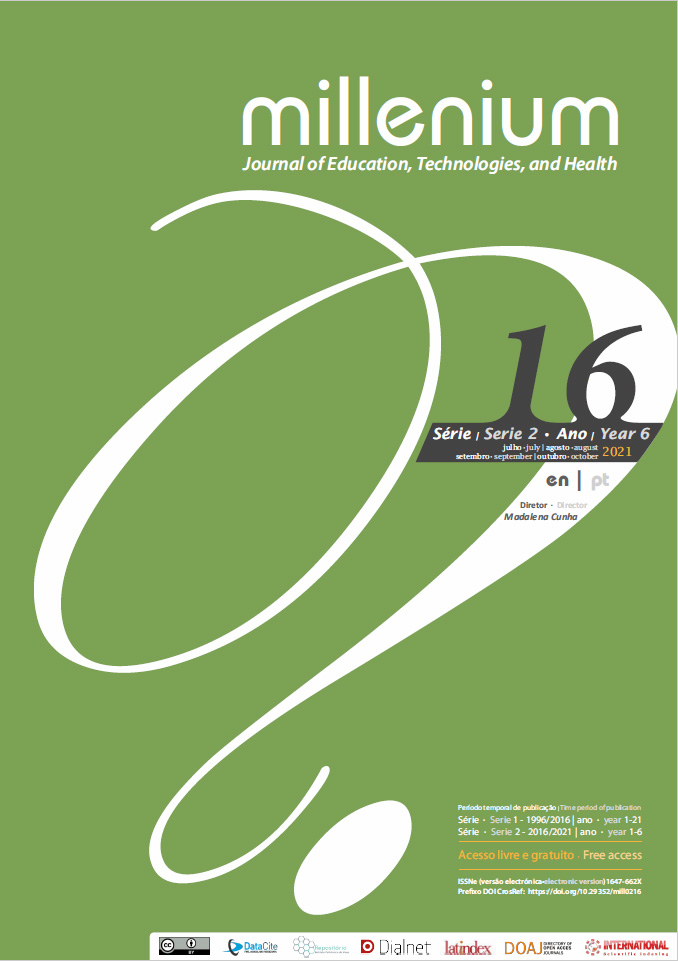Avaliação do desenvolvimento infantil de crianças com suspeita de perturbação do espectro autista
DOI:
https://doi.org/10.29352/mill0216.24854Palavras-chave:
transtorno do espectro autista, autismo, avaliação do desenvolvimento neuropsicológicoResumo
Introdução: O desenvolvimento infantil é um processo contínuo de aquisição e aprimoramento de habilidades globais que tem seus principais marcos nos três primeiros anos de vida do indivíduo. A Perturbação do Espectro Autista (PEA) caracteriza-se como uma alteração no neurodesenvolvimento que envolve déficits persistentes na comunicação e na interação social além de movimentos estereotipados que podem ser percebidos nos anos iniciais da criança antes mesmo do diagnóstico definido. Objetivo: Analisar o desenvolvimento global de crianças com risco para PEA nos seus 5 domínios: cognição, comunicação (expressiva e receptiva), motricidade (fina e grossa), comportamento adaptativo e socioemocional e, correlacionar com os sinais indicativos de PEA.
Métodos: Foram avaliadas 9 crianças do sexo masculino com idades entre 24 e 41 meses com suspeita do PEA, pelo Protea-R (Bosa &Salles, 2018), utilizando as escalas de desenvolvimento infantil Bayley (Bayley, 2018).
Resultados: De modo geral, houve comprometimento nos 5 comportamentos mensurados com maior intensidade nas crianças com Risco para PEA do que as com Risco Relativo para PEA. As habilidades cognitivas, linguísticas e socioemocionais se demonstraram mais prejudicadas nestes.
Conclusão: Este estudo possibilitou reflexões à cerca do desenvolvimento integral de crianças com suspeita dePEA mesmo não sendo possível determinar um padrão de desenvolvimento global nestes indivíduos.
Downloads
Referências
American Psychiatry Association (APA). (2014). Diagnostic and statistical manual of mental disorders-DSM-V. Porto Alegre: Artmed.
Amorim, R. C. A., Laurentino, G. E. C., Barros, K. M. F. T., Ferreira, A. L. P. R., Filho, A. G. M.&Raposo, M. C. F. (2009). Family health program: proposal to identify risk factors for neuropsychomotor development. Rev bras physiotherapist, 13, 6, 506-13.
Bayley, N. (2018). Baby and Toddler Developmental Scales. 3rd ed. São Paulo: Pearson.
Bosa, C. A. & Salles, J. F. (2018). PROTEA-R Sistema de Avaliação de Suspeita do Transtorno do Espectro Autista. 1. ed. São Paulo: Vector.
Busto, A. L. M., & Braccialli, L. M. P. (2018). Perfil psicomotor de crianças com transtorno do espectro autista. Revista Diálogos e Perspectivas em Educação Especial, 5, 2, 59-70.
Catelli, C.L. R Q.; D`Antino, M. H. F.& Blascovi - Assis, S. M. (2016). Aspectos Motores em Indivíduos com Transtorno do Espectro Autista: Revisão de Literatura. Cadernos de Pós-Graduação em Distúrbios do Desenvolvimento, São Paulo, 16, 1, 56-65. Doi: 10.22310/18094139/cpdd.v16n1p56-65.
Diamond, A. (2013). Executive functions. Annual Review of Psychology, 64, 135-68.
Dias, N. M. & Seabra, A. G. (2018). Neuropsicologia com pré-escolares: Avaliação e intervenção. São Paulo: Pearson.
Macedo, E. C., Mecca, T. P., Valentini, F., Laros, J. A., Lima, R. M. F. & Schwartzman J. S.(2013). Utilizando o teste não verbal de inteligência SON-r 2 ½ - 7[a] para avaliar crianças com Transtornos do Espectro do Autismo. Revista Educação Especial, 26, 47, 603-618, set/dez.
Maria-Mengel, M. R. S. & Linhares, M. B. M. (2007). Risk factors for infant developmental problems. Rev Latino-Am. Nursing, 15, 837-42.
Ozonoff, S., Iosif, A. M., Baguio, F., Cook, I. C., Hill, M. M., Hutman, T.& Young, G. S. (2010). A prospective study of the emergence of early behavioral signs of autism. Journal of the American Academy of Child and Adolescent Psychiatry, 49, 3, 256-66.
Silva, M.&Mulick, J. A. (2009). Diagnosing autistic disorder: fundamental aspects and practical considerations. Psychology: Science and profession, 29, 1, 116-31. DOI: https://doi.org/10.1590/S1414-98932009000100010.
Soares, A. M., & Calvacante Neto, J. L. (2015). Avaliação do Comportamento Motor em Crianças com Transtorno do Espectro do Autismo: uma Revisão Sistemática. Rev. bras. educ. espec. [online], 21, 3, 445-458.
Sociedade Brasileira de Pediatria (SBP). (2019). Transtorno do Espectro Autista. Manual de Orientação. Departamento Científico de Pediatria do Desenvolvimento e Comportamento, 5, 1-24.
Tomasello, M. (2003). Cultural origins of human knowledge acquisition. São Paulo: Martins Fontes.
Vygotsky, L. S. (1989). The social formation of the mind.7. ed. São Paulo: Martins Fontes.
Wallon, H. (2007). The child's psychological evolution. São Paulo: Martins Fontes.
Downloads
Publicado
Como Citar
Edição
Secção
Licença

Este trabalho encontra-se publicado com a Licença Internacional Creative Commons Atribuição 4.0.
Os autores que submetem propostas para esta revista concordam com os seguintes termos:
a) Os artigos são publicados segundo a licença Licença Creative Commons (CC BY 4.0), conformando regime open-access, sem qualquer custo para o autor ou para o leitor;
b) Os autores conservam os direitos de autor e concedem à revista o direito de primeira publicação, permitindo-se a partilha livre do trabalho, desde que seja corretamente atribuída a autoria e publicação inicial nesta revista.
c) Os autores têm autorização para assumir contratos adicionais separadamente, para distribuição não-exclusiva da versão do trabalho publicada nesta revista (ex.: publicar em repositório institucional ou como capítulo de livro), com reconhecimento de autoria e publicação inicial nesta revista.
d) Os autores têm permissão e são estimulados a publicar e distribuir o seu trabalho online (ex.: em repositórios institucionais ou na sua página pessoal) já que isso pode gerar alterações produtivas, bem como aumentar o impacto e a citação do trabalho publica
Documentos necessários à submissão
Template do artigo (formato editável)





